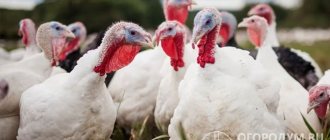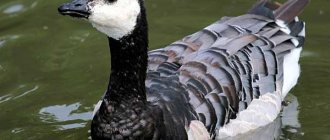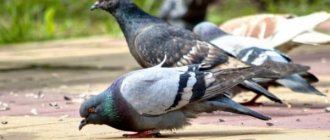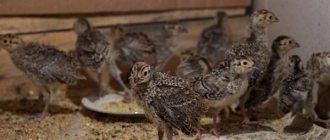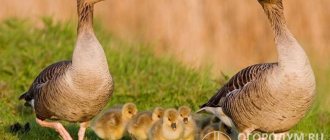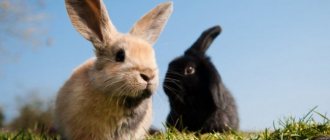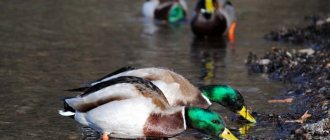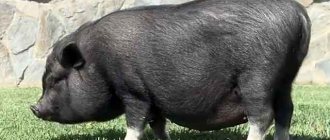Livestock » Pigs
2
6745
Article rating
Kira Stoletova
Under normal conditions, a pig itself is capable of feeding its children. But this only happens if the sow has enough milk. If there is not enough of it, the question automatically arises of what to feed month-old piglets.
What to feed one month old piglets
To understand what the diet should be, you need to study the needs of a month-old pig, because at different ages pigs should receive different amounts of certain vitamins and minerals.
Requirements for feed for suckling piglets
A piglet that is one month old easily digests absolutely all vitamins and microelements. Fiber is not suitable for feeding small pigs: their body is simply not able to absorb it. Feeding suckling piglets per month should be carried out in accordance with a strict selection of diet. Its health and weight gain depend on what a pig eats.
Feed for a one-month-old pig should be:
- High Quality;
- nutritious;
- easy to digest.
If you feed animals food that meets these requirements, the babies will actively gain weight. You should not feed animals, otherwise they will have problems with the gastrointestinal tract. There is a special table that sets out the norm for both a one-month-old piglet and a two-month-old one.
At home, you should also follow these rules, because if food is poorly digested, pigs will begin to have problems not only with the gastrointestinal tract, but also with other organs.
Only healthy people are fed
10-15 days after weaning the babies from the sow, active feeding of healthy individuals begins. Fattening piglets that are poorly developed and sickly is not economically profitable. This is a waste of feed, a loss of time, and therefore a loss in business. Therefore they are sent to slaughter.
If you feed the animals correctly and create the same conditions for all healthy young animals, then the hogs grow more actively than the females, but the latter produce meatier carcasses.
At 1.5 months, when the piglet is weaned from the sow, it eats dry and wet food on its own. From the second month, corn, buckwheat, and bran are removed from the diet. These products reduce meat mass, increasing fat. A large amount of oats, cake, soybeans leads to a sharp stop in growth, loose meat and yellow lard.
Feed for suckling piglets
The piglet's diet should mainly consist of milk. But during this period, giving milk alone is not enough. From day 20 you can start introducing potatoes, cereals and milk into your diet. You can also give a mixture of cereals. For this age it is better to observe the following ratio:
- barley - 46%;
- oats - 30%;
- peas - 5%;
- sunflower meal - 9%;
- fishmeal - 6%;
- special feed yeast - 3%;
- chalk - 0.8%;
- salt - 0.2%.
This mixture will fill the piglet’s body with all the necessary vitamins and microelements. You can also introduce greens into your diet at this age. Legumes are especially good for babies.
To feed at home, you need to choose the right menu. You can purchase products that contain all the necessary substances, or you can add them to the food yourself.
Grind and sprinkle with salt
For any options for fattening pigs on farms, you must adhere to the immutable rules for pig farming:
- You can’t feed leftovers from yesterday’s food, everything is only fresh;
- when adding grain, vegetables, and vegetation to the main feed, all this is crushed for better absorption by the pig’s body;
- The temperature of the food should be cool, not hot;
- proteins and amino acids are barley, soy, fishmeal and calcium-containing products; they are added to the main meal;
- The food should contain salt - up to 40 g, for better absorption of food by the pigs' stomach.
Compliance with these rules will provide the animals with adequate nutrition and protect them from many diseases, which means they will grow well and gain weight quickly.
In pig farming, a good indicator is low feed costs, but at the same time the pigs have good weight gain. This is feed conversion with a low coefficient (the ratio of spent feed to a unit of product received, for example, to 1 kg of weight gain). If it is high, it means a lot of food is wasted and keeping animals is unprofitable.
Each pig fattening technology was developed to produce different products (meat, bacon, lard) on favorable terms. We will talk about each of them below.
Dry food
Dry feeding is suitable for those who do not want to overwork themselves. It consists of feed, bran, hay shavings and cake. Piglets can be given this food from the age of one month. This product is most often used for fattening babies. If you feed your pigs this food, they will never have stomach problems.
Dry food can be purchased from manufacturers or in specialized stores. For piglets in the first month of life, they contain all the necessary nutrients. If you decide to prepare this food for your kids at home, you should add a premix to it. It is also necessary to add yeast, bone meal and other useful substances to the mixture. The amount of this mixture for a pig is indicated on the packaging.
Achieving low fat
Meat fattening of pigs is the most effective and popular on pig farms. Typically, a fattened piglet eats feed that can be classified as the first group - rye, pumpkin, wheat, peas, combined silage, dairy waste. As a result, the product turns out tender, soft and juicy with a thin layer of bacon.
Potatoes, wheat bran, buckwheat and corn (second group) make pig meat loose. Fish waste, oats and cake (third group) give it an unpleasant taste.
The best ratio in the menu is considered to be 40% of the first group of feed and 60% of the second. If food products of the third group are used, they can be taken 20%, the second - 50%, and the first - 30%. When there are 2 months left before slaughter, the feed of the third should be completely excluded from the diet.
Feeding pigs for rapid growth is best done during warm periods - spring or summer - because there is access to inexpensive and nutritious food. Green food at this time makes up 30% of the diet. There is also an abundance of melons, root vegetables, and legumes. In winter they are replaced with combined silage and grass meal.
Biofeed
This food includes all the beneficial substances a pig needs during its first month of life. It includes greens that animals of any age love. The biofeed also contains a set of vitamins and microelements that children need.
Piglets can be given both industrial biofeed and home-cooked feed. To prepare it yourself, you need to mix herbs, fruits, vegetables and premixes. For pigs in the first month of life, it is very important to give it according to the rules.
Feed additives
Feed additives are the basis of the diet of pigs of any age. They especially play an important role for piglets in the first month of life and in cases of fattening. Most often, farmers make these additives themselves at home. First you need to take different protein products, it can be milk, meat, fish and more.
Minerals should also be included in the piglet formula. This could be salt, chalk, egg shells and more. Such substances allow you to saturate the body of a pig in the first month of life with phosphorus, calcium and others. A month-old animal eats such food with pleasure.
Prohibited foods
Feeding suckling piglets must be done correctly. In order not to harm the babies, you need to know what foods should not be given, because there are foods that can cause not just poisoning, but serious illness. The first thing that should not be given to pigs per month is rotten and frozen foods. In the official video from farmers, you can see how a piglet loses weight and dies in three days from E. coli. You need to monitor how and what the baby eats, otherwise there is a high risk that the piglet will get sick.
There are also plants that are poisonous to piglets. Among them are spurge and buttercup. These herbs can lead to the death of babies. In order not to harm the animal, it is advisable to process all feed. This will remove all harmful substances, if any.
You cannot give a month-old piglet green and sprouted potatoes. Also, water from potatoes should not be included in the diet. Beets can also be dangerous for pigs, but this is only if they are overcooked.
Time to bulk up
Fattening pigs for meat begins after the rearing of piglets is completed. By this time they weigh 50 kg, and sometimes more. The diet includes even more nutritious foods and concentrates. Next, we will tell you in detail how to do this correctly so that weight gain does not slow down.
Concentrated feed is given first place in the diet of fattening pigs. The second contains juicy and coarse components. If piglets are fed dry food, they need to be given plenty of water to avoid constipation. Unlimited drinking also promotes rapid growth. The pig should eat enough and consume at one meal as much food as it needs to be completely satisfied. If there is access to pasture, the animals are released; the average walking time is 5-7 hours daily.
Types of fattening pigs are divided into meat (including bacon) and lard. Now let’s look at what pigs are fed at pig farms to obtain different products.
Daily feed intake
There is a certain norm of vitamins and microminerals that a month-old pig should receive per day. At home, the norm for 1 kg is as follows:
- calcium - 7 g;
- phosphorus - 6 g;
- salt - 6 g.
To saturate the body of a month-old piglet with all the necessary vitamins, you can use oats, peas, corn and other natural feeds for feeding. How much of these supplements to give depends on what else is included in the baby’s diet.
Animals of this age often suffer from anemia, so they must be fed according to a strict feeding schedule. If you follow it, then there will be no problems with the piglet. Also, to prevent anemia, it is necessary to add a solution of iron sulfate to the water.
More concentrates - more fat
On pig farms, those pigs that were culled have always been fattened for lard, and they often continue to do so. Usually these are adult queens, boars, and replacement young stock. They are engaged in them for 2-3 months. If at the beginning of fattening an individual must weigh at least 100 kg, then by slaughter the weight increases and reaches 200 kg.
The diet of such animals should contain carbohydrates with less protein. For the first month of fattening, bulk feed makes up 50%. These are silage, potatoes, root crops, food and grain waste.
In the last period, the main fattening product is concentrates, constituting 70 or 100% of the diet. Ideally, the daily weight gain can be 1 kilogram, and the layer of fat obtained at slaughter can be from 7 cm.
An approximate daily ration for one pig fattened for lard in the summer should consist of 4 kg of green feed, 3.5 kg of pumpkin, 3 kg of concentrates, 50 g of salt.
Fattening a pig for meat
Fattening should be done using products that contain protein, carbohydrates and fats. You also need to feed piglets food rich in vitamins and minerals. Protein is found in legumes and grains. It allows babies to quickly get used to adult food.
Carbohydrates are used in the diet to give babies energy. That is why for fattening it is necessary to use green feed with the addition of root vegetables. This is the only way the pig will receive the required amount of carbohydrates. The animal can obtain all other vitamins using various supplements. They need to be fed strictly according to the plan so as not to lead to problems with the gastrointestinal tract.
In order to improve the metabolism of one-month-old piglets, it is necessary to introduce amylosubtilin HZH into their diet: it will not only improve the functioning of the entire body, but also quickly gain weight. It also makes the meat very tasty and healthy. If babies do not eat well, they should be given sodium gluconate. With its help, a good appetite is developed.
Tips for feeding piglets
Potatoes in a piglet's diet should not be raw. If you decide to give this vegetable to your kids, it must be thoroughly boiled and crushed. The water in which potatoes were boiled should not be used for this, because it contains toxic substances.
Only carrots, beets and melons can be given raw. If you decide to boil them, you can safely give the remaining water to the piglets: it contains a lot of useful substances that play an important role in the development of pigs of any age.
Animals can be fed hay only after pre-treatment. To do this, you need to take the hay and steam it. Babies should grind grains, because their stomachs are not yet ready to digest the whole product. It is also worth remembering the list of plants that are poisonous to piglets. The slightest dose can lead to the death of pigs.
How many times a day should piglets be fed?
Little pigs should not eat only 2 times a day. For normal development and growth, piglets need to eat about 6 times a day: this is the only way babies can quickly gain the required weight and at the same time receive all the vitamins and microelements.
Over time, the amount of feeding should be reduced to 2 times a day, but not before reaching the age of 4 months. In addition to food, babies must be given water, so you should constantly make sure that they have it.
Animal nutrition from two months
This is what an approximate feeding ration looks like after 8 weeks of a piglet’s life. The daily rate of skim milk per individual is 600 ml as a base. To it add 150 g of grain, root vegetables - 250 g, boiled potatoes and derti - 500 g, herbal flour - 100 g. Mandatory minerals - chalk (15 g) and salt (10 g). The body weight of young offspring should reach 21 kilograms (maximum 25).
From 2.5 to 4 months, piglets actively develop. For rapid growth of pigs, comfort and balanced, fresh nutrition are provided. Thickly prepared oatmeal, pea and barley porridges are perfect. Dairy products also contribute to rapid weight gain in young animals.
Potatoes, carrots and grass are not excluded from the diet. With the onset of cold weather, piglets are given chaff, silage, hay dust and vegetables in double quantities.
